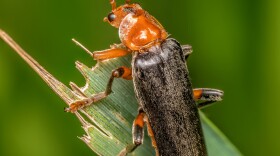You might remember Violet Beauregarde from the movie Willy Wonka and the Chocolate Factory, the gum-chewing girl who swells up like a giant blueberry.
This was the first image that popped to our minds after learning about honey pot ants.
Honey pot ants are native to the deserts of Africa, Australia, and North America. In the United States, they are commonly found in New Mexico and Arizona where they feed on the sugary nectar of desert flowers during the rainy season.
Similar to other insects, like honey bees and some wasps, the ants store nectar during times of plenty. But instead of storing this excess food within the nest or in combs, honey pot ants employ a different strategy — overfeeding some of their nest-mates.
Specifically, large worker ants, known as “repletes,” are continually fed nectar collected by other worker ants. Instead of immediately feeding this nectar to the colony, they store it for future use.
While ants have hard exoskeletons covering their bodies, the abdomens of the repletes have stiff plates connected by a soft, flexible membrane. When empty, they look like a regular ant. But when gorged on nectar, the membrane stretches significantly.
The result? Their abdomens swell to the size of a pea. They essentially become a living food pantry.
When food becomes scarce and the colony needs to tap their reserves, worker ants stroke the antennae of the cow-like repletes, causing them to regurgitate the stored food. Dinner is served.
As you can imagine, being gorged on nectar might make you a tasty treat to other animals too — humans included. While you might expect a honey-like flavor, we found them to taste like sweet grape juice.





